Table of Contents
Outdoor cats: This is what you should know
Cats that can move freely outside and do whatever they want lead full lives. You arrive home balanced and satisfied. There they enjoy the comfort of their “own four walls”, the peace and security in a cozy bed and the cuddles of their two-legged friend. Fully fed, they will soon start their next adventure feeling strengthened. If you would like to provide a home for a feral cat, you will find everything you need to know about these velvet paws that primarily live outside.
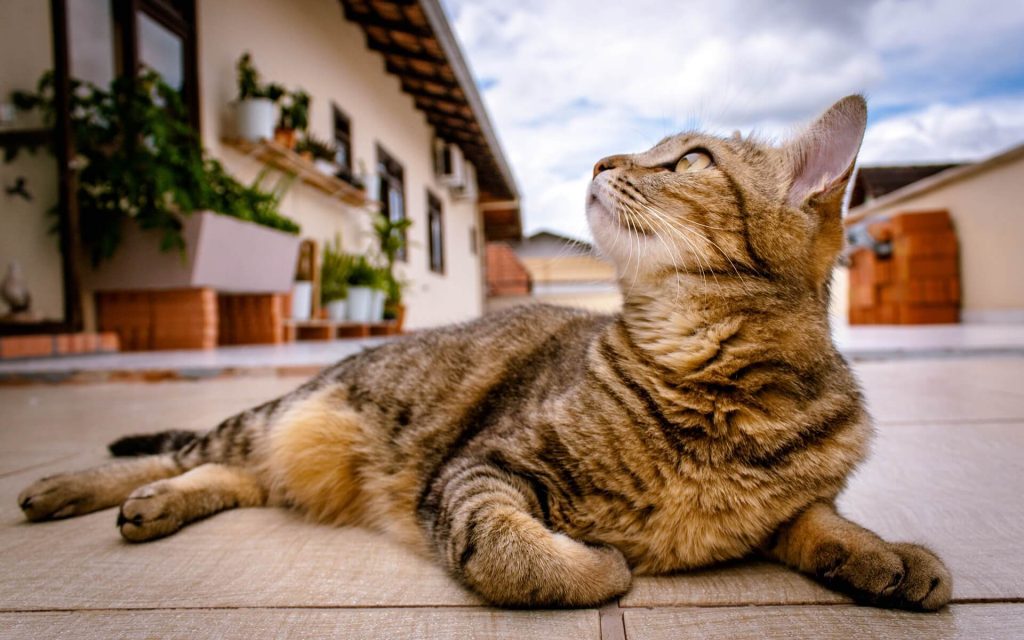
Keeping outdoor cats safe – what do I have to consider?
You have two options when it comes to keeping a cat: your kitty becomes a house cat and lives primarily in your apartment or you give it independent freedom. So-called “outdoor cats”, i.e. cats that are allowed to wander outside to their heart’s content, can live out their urge to explore, but are also exposed to increased dangers compared to their in-house counterparts. We’ll show you what you need to pay attention to if you want to keep a feral cat.
- Not all cats are suitable for an outdoor life: chronically ill animals, cats with disabilities or cats with allergies should be kept indoors, where you can better care for them according to their needs and ensure that they stay healthy.
- Life expectancy: How old do feral cats get? On average, feral cats live a little shorter than in-house cats, which can live an average of over 15 years.
- Habitat: Not all environments are equally suitable for keeping feral cats. An apartment on the ground floor or a house with access to the garden is ideal. If a cat flap can be installed, the cat can even go in and out independently. Most outdoor animals really appreciate a quiet and warm place to sleep in their apartment or house in winter. In the case of rented apartments, it should be clarified in advance whether the landlord and the other tenants have no objections (e.g. allergies) to a free-roaming cat – for the benefit of a good neighborhood and your velvet paw. Moving is particularly stressful for feral cats, which is why feral cats are particularly good to keep if they are allowed to stay in one place for the rest of their lives.
- Nutrition: What and how often should I feed my outdoor animal? Since many feral cats are often out and about all day, they require more energy than cats kept exclusively indoors. The cat food should therefore be healthy, high in energy and nutrients in order to provide your four-legged friend with enough energy and nutrients for his forays. Special additional or mineral feed is recommended here. You can fill the cat’s bowls with dry or wet food or home-cooked food, and he won’t refuse you treats either.
It is also important that your animal roommate drinks enough: there should always be enough clean drinking water available. It is advisable to have fixed times for feeding when your four-legged friend returns home and can eat in peace. In addition, he will occasionally catch and possibly eat a mouse or bird in nature. It can therefore happen that a mouse is proudly placed at your feet or that indigestible or spurned remains of its prey can be found in the garden.
- Keeping outdoor animals busy: Outdoor animals can hunt outside, play with other animals, run around and explore new areas. They therefore do not need nearly as much activity from their owners as in-house cats. But if you care about bonding with the animal despite your furry friend being away for hours, you should plan regular cuddles and petting sessions. This can be optimally combined with fur care: With gentle brushing , your garden tiger will relax and enjoy your attention to the fullest.
- Buy a feral cat : If you want to buy a feral cat, you can ask the regional animal shelter whether feral cats are currently looking for a new home there. However, if you are specifically looking for a pedigree cat that you can keep outside, breeds such as Maine Coon or Bengal cats are suitable.
- Once an feral cat, always an outdoor cat : You should be aware that an feral cat will have difficulty withstanding a possible ban on going out and being confined to the house – be it only temporarily to recover or during the breeding and nesting season, when birds raise their young undisturbed in the garden. If she has to be kept in the apartment temporarily, make sure she has enough variety. It is even more difficult if the cat suddenly has to be kept in the apartment permanently, e.g. B. due to a move. If the cat is not used to in-house living, it will be difficult for you to re-educate it and it will continue to demand freedom. Therefore, carefully consider whether you can give your kitty freedom permanently.
- Chipping your cat: Your feral cat should definitely be chipped; in many regions this is mandatory. The microchip is very small and is placed under the skin. The animal can be clearly identified using the chip, which is a crucial advantage, especially for lost cats.
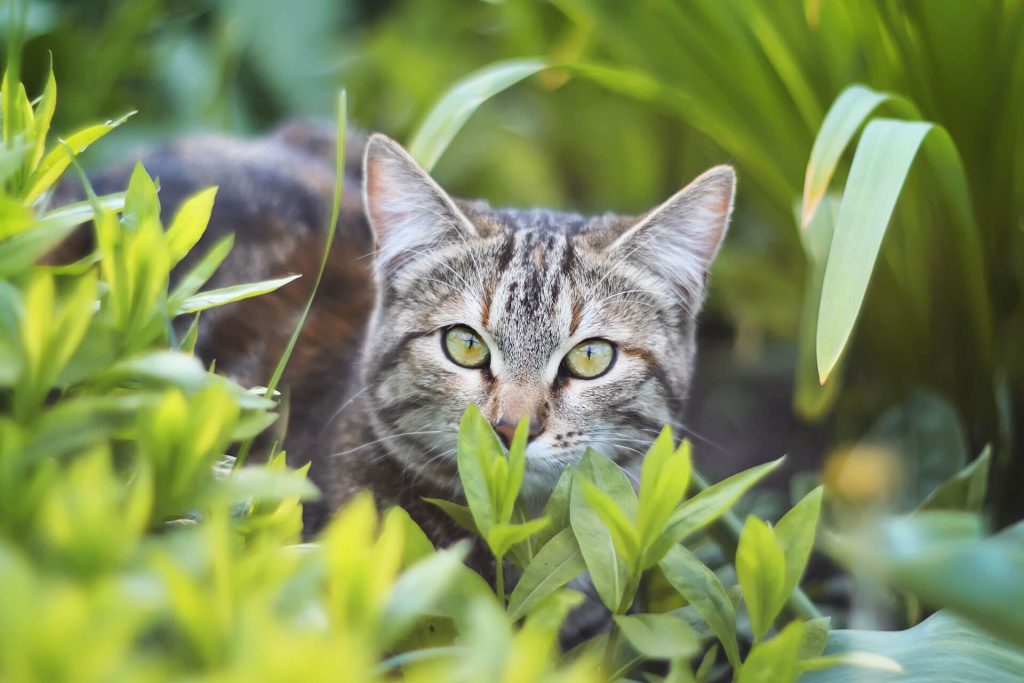
What dangers are outdoor feline exposed to?
Basically, the “outdoor cat” lives a little more dangerously than the pure “house cat” because it go outside, moves around in traffic, fields and meadows at any time of the day or night. Life as an outdoor animal therefore entails some risks, some of which can, however, be reduced.
- Traffic : If there is a lot of traffic in the area, you should not keep a cat as an feral cat. The risk that the animal will be hit or even fatally injured is too great. It is not so easy to answer when a road is far enough away: depending on the building density, the surrounding landscape and the cat’s motivation to move around (e.g. cats ready to mate and tomcats looking for a partner), cat territories are sometimes only several hundred square meters in size. In other cases, the active four-legged friends also cover several kilometers on their forays.
- Parasites : Outdoor cats are more susceptible to this than house cats. The pests are brought in from outside through contact with conspecifics and other animals, while eating or simply while wandering around, e.g. B. in tall grass where ticks can lurk. However, there are some preventive measures against parasites such as fleas, mites, ticks or worms, such as worm treatments or antiparasitics that are carried out several times a year and are also administered as a preventive measure. If you pay attention to good hygiene, clean cat beds and cat caves regularly and care for the fur adequately, you will detect a parasite infestation in good time and reduce the risk of parasites being able to establish themselves in the first place.
- Diseases : Outdoor animals are also more susceptible to diseases such as cat disease, cat flu or rabies. However, you should have your pet vaccinated against many diseases.
- Conspecifics: Territorial fights can occur, especially where several cats meet. There is a risk of injury here.
- Feeding by third parties : If the cat is allowed to wander freely, cat owners obviously have little to no control over whether the animal is also fed elsewhere – possibly with poor or incompatible food. You should therefore make sure that your cat feels comfortable with you and eats regular meals at home.
- Wild animals : Martens and foxes can be dangerous to cats. However, martens are nocturnal. A helpful measure is to stop letting your cat go out at dusk and let it sleep inside.
- Poisonous plants : Poisonous plants that can cause vomiting or diarrhea in cats include ivy, begonias and oleanders – all popular garden plants that you should avoid in your cat-friendly garden . You should gently accustom inexperienced kittens to being outdoors and prevent them from nibbling on plants. Ideally, you should plant catnip and provide cat grass; your four-legged friend will thank you.
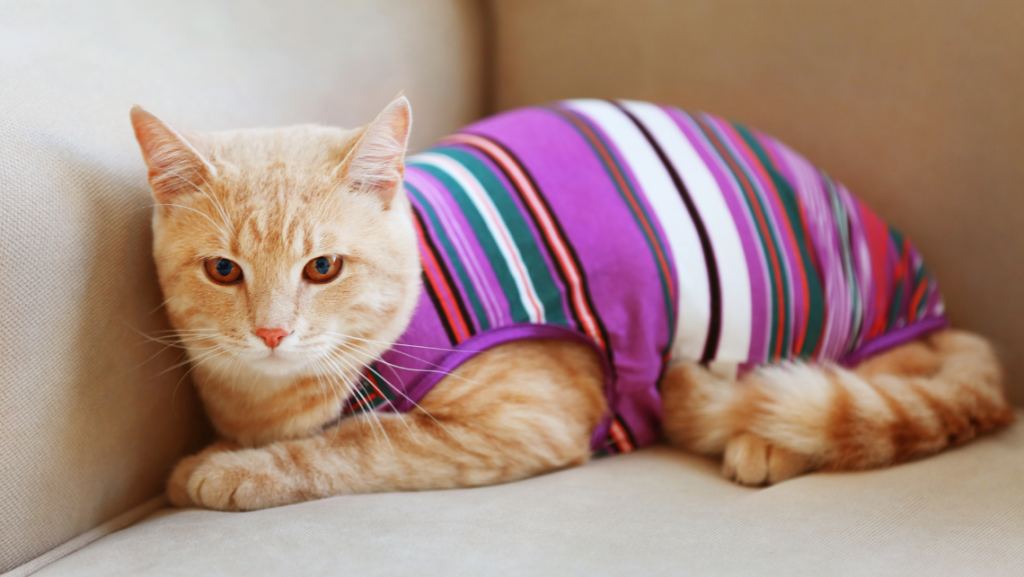
Do I have to neuter my outdoor cat?
In some municipalities, districts and federal states there is already a requirement for castration for free-wandering cats, but even without this, as an animal lover you should definitely opt for castration. This is the only way to prevent cats from multiplying uncontrollably. Because outdoor animals easily find a partner willing to mate. If it is a stray cat, the offspring often have little chance of survival. Every owner should be aware of this responsibility and make their outdoor animal infertile.
Other benefits of castration
The Federal Association of Practicing Veterinarians also e. V. in Germany speaks out clearly in favor of castrated animals on its website and points to other advantages such as:
- Higher life expectancy
- Cats no longer go into heat
- Aggression is minimized
- The animals roam less and stay nearby
- Risks of accidents, infections and illnesses are reduced
How do you get a cat used to being outdoors?
When your new roommate moves in with you, you can gradually get him used to his new home and the outdoors. You shouldn’t rush anything here so that your protégé feels safe and recognizes his new home as such. You should plan the following phases:
- Getting used to the apartment/house : First, your feral cat has to get used to its new home. This is the basis before the first release can take place after a few weeks.
- Getting used to the garden : If your cat feels safe in its new home, you can take your first walk in the fresh air. The important prerequisite for this is that you have created a cat-safe garden. A cat harness or cat collar is also advisable for the first taster session in the fresh air . However, you should offer her enough freedom so that she can look around and explore everything at her own leisure. Your four-legged friend may initially be uncomfortable with the cat flap. Here too, proceed carefully and give him time to get used to it.
- Allow your own forays : After the initial stays outside only lasted a short time and were ended with a delicious meal at home, you can accompany your cat on its first forays through the neighborhood. If you go home together and reward her with a treat or prepare one of her favorite foods again, she will gradually understand that returning home is worth it. As soon as she is familiar with her new surroundings, she can go out on her own. Don’t be surprised if the first forays are very long or your darling is out and about for several days. Since they first have to get to know their new territory and often hide, getting to know them can take some time. But after two to three days, go looking for it; it may have hidden in a garage and was accidentally locked there.

What do I need for my feral cat?
To make your new protégé feel comfortable at home, you should purchase the following cat equipment:
- At least two cat bowls for eating and drinking
- Suitable food and cat snacks
- A cat bed to sleep and rest
- A litter box
- Cat brushes and other cat care products
- Cat toys if you want to actively engage with your velvet paw
How does my outdoor cat stay healthy?
To ensure that your active roommate’s healthy life you don’t have to worry, you should take the following precautions and measures:
- Vaccinations: You should have your feral cat vaccinated so that it is better protected against serious diseases. Ask your veterinarian for advice on which vaccinations are necessary.
- Deworm regularly : A must for feral cats is regular worming, at least four times a year. For example, a tablet is mixed into the food or a paste is administered directly.
- Protection in winter : To keep your cat well protected through the cold season, you can regularly care for its paws with balm to prevent them from becoming cracked. Extra energy-rich food is also a good measure so that your tiger doesn’t have to freeze in winter.
- Fur care: Regular and thorough fur care is a must, especially for free-wandering cats. This includes brushing as well as carefully checking for any parasites or injuries under the fur.
Indoor cats advantages and disadvantages
Are you still considering whether feral cat ownership is the right way to keep cats for you? We have summarized all the advantages and disadvantages for you again:
Advantages of outdoor animals:
- Less work for you as a kitty owner because the cat is on the move a lot
- Busy animals, which minimizes the risk of damaged furnishings
- A lot of freedom for the animals and they can pursue their natural hunting instincts
- Hardly any cat hair in the apartment
- Free-wandering cats are less likely to suffer from obesity
Disadvantages of feral cats:
- lower life expectancy than in-house cats because they are exposed to more dangers
- more susceptible to disease, parasite infestation and injury
- less control over what the cat does, what it eats and where it is
- Cat flaps cannot be easily installed everywhere; alternatively, insulated cat houses for outside are available
- Cat could escape
The 10 golden rules for your outdoor cats
Outdoor access for cats is a particularly natural form of cat ownership in which exercise and activity for cats is particularly encouraged. But a big disadvantage is that there are many dangers for cats outside . That’s why there are a few things to consider when a cat becomes an feral cat. With our 10 golden rules you are well prepared.
1. The right cat flap
If you have a cat flap , make sure you buy the right size so that your cat can easily get through and not get stuck. There are also flaps through which only your own cat has access to the house.
How can I get my cat used to the cat flap?
An organizational problem can arise when the cat is released: the cat will regularly sit in front of or behind the door and strongly demand to be let out or in. A good solution is to install a cat flap, a door in the door through which the cat can enter and leave the house at its own will. Specialist retailers offer cat flaps in many variants, which are usually easy to install. Glass doors (for example on the terrace) require the help of a glazier. Modern cat flaps offer a variety of practical additional functions. For example, you can prevent “unauthorized” cats from entering the house by setting the door to only open for your cat – the same microchip that is used as identification serves as access authorization. Time-linked program functions ensure that the cat flap only opens at certain times or that access is only possible into the house but no longer out.
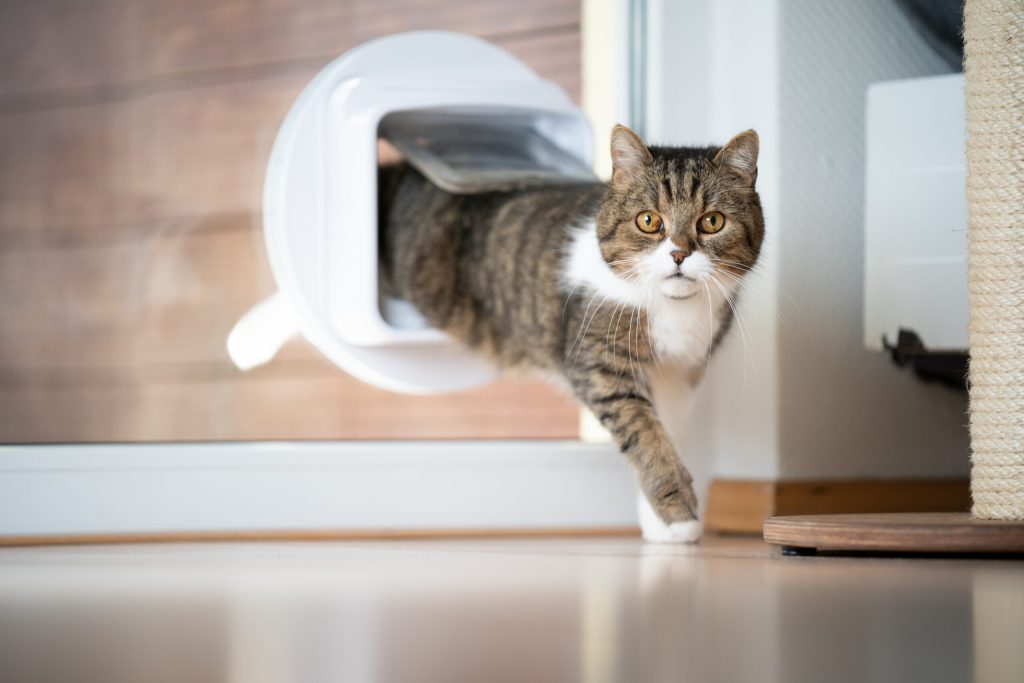
However, using the cat flap must be trained initially. To make the cat understand what the door is all about, first fix the flap so that it is open and then try to lure the cat through the opening. A toy or treat can serve as an incentive for the animal to try out the unknown gate. Be patient – cats are often suspicious of new things. Praise and reward successes and then try to close the cat flap little by little. Your cat will soon understand how the exit works.
2. Protection from the busy road
Unfortunately, there is no protection against all dangers. As a cat owner, there is little you can do about busy roads. However, you can fence in your garden and thus secure it. This is relatively time-consuming, but if your house is near a dangerous main or federal road , it’s definitely worth it! If it is not possible to offer the cat a safe outlet in this case, it is better to refrain from using it outdoors. Maybe you have a balcony that you can make cat-proof instead?
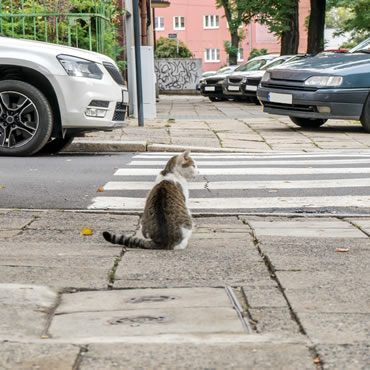
3. Don’t let the cat do outdoor time too early
After moving , the cat must first be well accustomed to the new house or apartment before it is allowed outside. This can take several weeks. The same applies to a kitten who is given freedom for the first time. Cats that have always lived in an apartment and suddenly move into a house with a garden need a slow introduction to the outdoors.
4. Vaccinations for outdoor cat
Feral cats need protection against rabies in addition to all the usual vaccinations that in-house cats also receive.
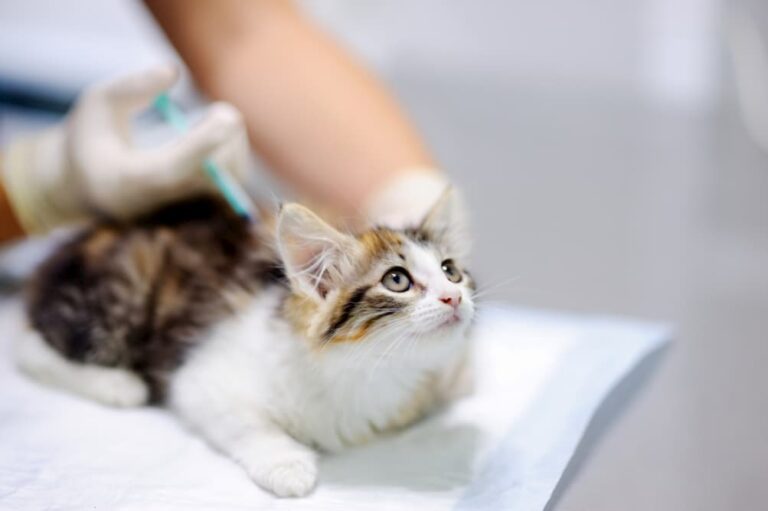
5. Protect your cat from parasites
Effective prophylaxis against ticks and parasites is essential for cats that roam outdoors. Your veterinarian can advise you and recommend a spray or an effective spot-on product and appropriate handling.
Very important: Do not use dog products for cats, this can be life-threatening .
6. Is there a pond or pool nearby?
Pools and ponds pose a danger that should not be underestimated. Although it is unlikely that cats will simply drown in them, cats that have fallen into the water on smooth walls cannot find a place to get out and drown. You should therefore definitely secure water bodies in your own garden or design them with a flat entrance and without climbing plants. Also check whether there is such a danger in the immediate vicinity.
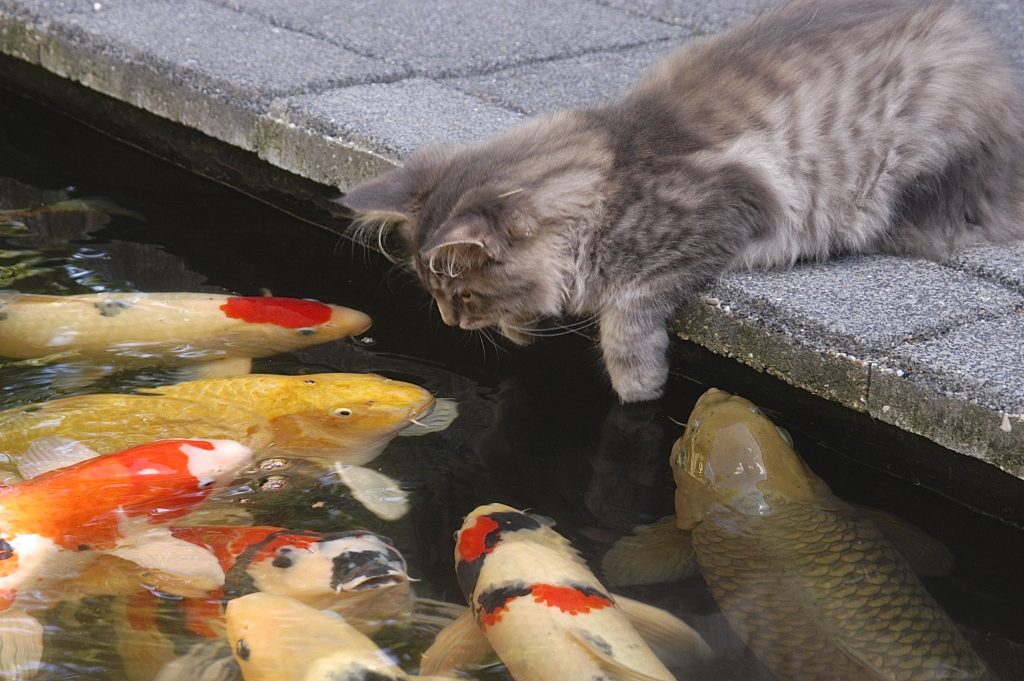
7. A chip can save you
Every feline friend that is allowed great outdoors should be chipped be. An individual and unique number is stored on the silicon chip, which is placed under the skin, through which a lost cat can be clearly assigned to its owner. The number can be read with a device that veterinarians or animal shelters have, for example. Many missing cats return home thanks to Chip.
8. Can a cat get too cold?
Cats that have regular access to the outdoors develop thick fur in autumn and winter . They get used to the increasingly cooler temperatures in autumn. As long as they are dry, the cold is usually not dangerous. But if the cat has to stay outside for a long time at a time, you should offer it a place to warm up (e.g. a box with a blanket) or buy a cat flap.

9. Wetness is more dangerous than cold
Wet fur cools the cat down. So if the cat is wet, it needs a dry place to warm up. If she cannot enter the apartment at any time through a cat flap, you should definitely place a basket or box with a blanket outside in a sheltered place such as the terrace or shed. This means the cat has a nice, dry and warm place outside.
10. Be considerate of your neighbors
Easier said than done, because cats can’t be banned from going outdoors. But be friendly and cooperative when, for example, she fishes the koi carp from the neighbor’s pond. Otherwise, arguments can unfortunately escalate quickly.
How did you get your furry friend used to life outside? What are your experiences with your independent darling? We look forward to your tips in the comments!
FAQs
Q: What are the risks of allowing my cat to roam outdoors?
A: Allowing your cat to roam outdoors can expose them to various risks such as traffic accidents, fights with other animals, predation, poisoning, and getting lost or stolen. It also increases the chances of contracting diseases and parasites.
Q: How can I keep my feral cat safe?
A: To keep your feral feline safe, you can use a variety of methods such as providing them with a secure enclosure, using a positioning tracker or silicon chip, and ensuring they have access to proper veterinary care and vaccinations. Additionally, you can consider creating a cat-safe outdoor space or using a cat-tracking collar.
Q: What is a catio and how does it help in keeping feral cats safe?
A: A catio is an enclosed outdoor space designed specifically for cats. It provides a safe and secure area for your cat to enjoy the outdoors without exposing them to potential dangers such as traffic, predators, or harmful substances. Catios can be attached to windows, patios, or stand-alone structures.
Q: Is it safe for feral cats to interact with community cats or feral cats?
A: Interactions with community cats or feral cats can pose various risks to feral cats such as fights, potential transmission of diseases or parasites, and territorial conflicts. It’s best to keep your outdoor cat away from interactions with community or feral cats to ensure their safety and well-being.
Q: What should I do if my feral cat gets lost or goes missing?
A: If your feral cat gets lost or goes missing, it’s important to act quickly by searching the immediate area, contacting local animal shelters or rescue organizations, posting flyers in the neighborhood, and utilizing social media and online platforms to spread the word about your missing cat. Additionally, make sure your cat has a visible identification tag or is microchipped for identification purposes.
Q: What are the benefits of using a GPS tracker for my outdoor cat?
A: Using a GPS tracker for your feral cat provides numerous benefits including the ability to monitor their location in real-time, track their movements, receive alerts if they stray outside a designated area, and quickly locate them if they go missing. It gives you peace of mind and enhances the safety and security of your feral cat.
Q: Are there specific ways to create a safe outdoor environment for my cat?
A: Yes, you can create a safe outdoor environment for your cat by providing a secure enclosure or catio, ensuring they have access to clean water and shade, removing toxic plants or substances from the area, and regularly checking for any potential hazards or escape routes. You can also consider using a cat door with selective access.
Q: What measures can I take to protect my feral cat from leeches and ticks?
A: To protect your feral cat from parasites and ticks, you can use veterinarian-recommended leeches and tick preventive treatments, regularly groom and inspect your cat for signs of parasites, keep the outdoor environment free from tall grass and debris, and consider using environmental leech and tick control methods in the outdoor space.
Q: How can I encourage my feral cat to spend more time inside?
A: You can encourage your feral cat to spend more time inside by creating a comfortable and stimulating cat indoors environment, providing interactive toys, climbing structures, and cozy resting areas, and gradually transitioning them to in-house activities and play. Using positive reinforcement and enriching their in-house environment can help in keeping your feral cat safe.
Q: What are the potential dangers of the outdoor environment for my cat?
A: The outdoor environment poses various potential dangers for your cat including traffic-related accidents, exposure to toxic plants or substances, encounters with aggressive animals, risk of getting lost or stolen, and susceptibility to various diseases, parasites, and environmental hazards. It’s important to be aware of these dangers and take necessary precautions to keep your outdoor cat safe.